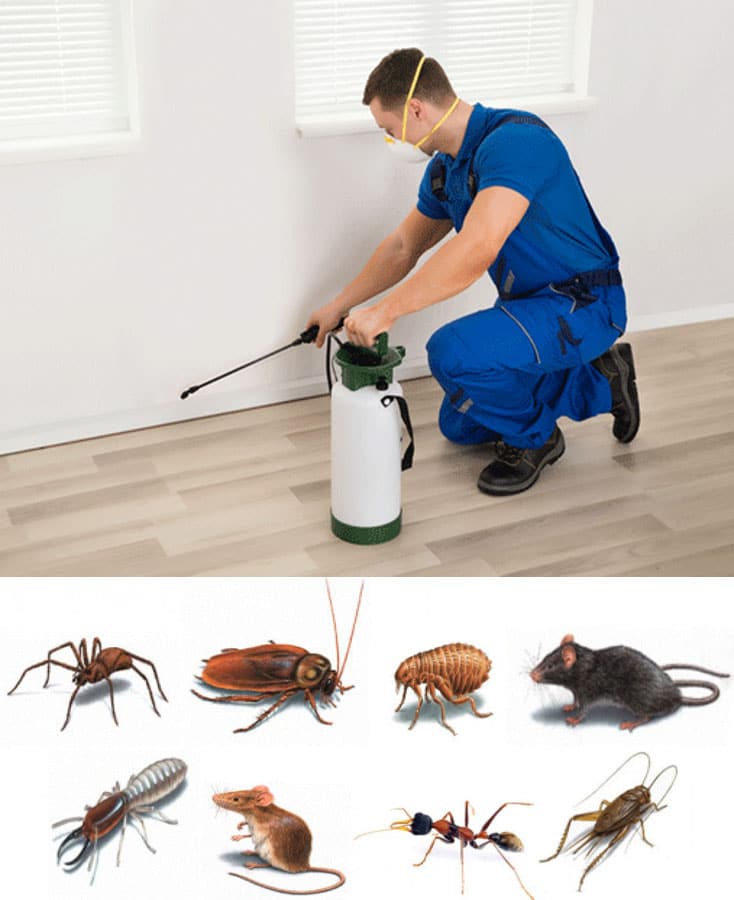A1 Charlotte Pest Control Companies - Your Local Pest Professionals
A1 Charlotte Pest Control Companies - Your Local Pest Professionals
Blog Article
Bed Pest Therapy Breakdown: Comparing Chemical Vs. Non-Chemical Solutions
In the world of bug control, particularly when managing the persistent problem of bed pests, the option in between chemical and non-chemical therapy services can be a pivotal one. Both methods provide unique advantages and disadvantages, influencing factors such as efficiency, safety and security considerations, and total expense. By examining the nuanced information of each approach, a more clear understanding of which course to pursue in addressing a bed pest invasion can be achieved.
Performance of Chemical Therapies
Chemical therapies for bed bug invasions have actually been widely acknowledged for their powerful and fast efficiency in getting rid of these pests. When considering the efficiency of chemical treatments, it is vital to recognize that they can provide a quick and detailed service to a bed pest problem.
In addition, chemical treatments have the benefit of providing residual impacts, indicating that they can proceed to remove bed insects also after the first application. This residual activity is specifically helpful in combating any type of prospective re-infestations. Additionally, the quick action of chemical treatments can bring relief to people facing severe bed pest invasions, allowing them to restore control of their space promptly.
Safety And Security Interest In Chemical Solutions
One critical facet that calls for mindful consideration when utilizing chemical remedies for bed bug therapy is making sure the security of residents and the environment. Exposure to certain chemicals used in bed bug treatments can lead to respiratory system concerns, skin irritation, or various other unfavorable responses, specifically in people with pre-existing problems or level of sensitivities.
Moreover, the environmental effect of chemical remedies is another substantial factor to consider. Some pesticides made use of in bed bug therapies might be dangerous to helpful bugs, wild animals, and ecosystems if they leach right into the dirt or water systems. It is important to utilize chemical therapies judiciously, adhering to safety standards, and considering much less toxic choices to minimize these threats and make certain the effective and risk-free monitoring of bed pest infestations.
Benefits of Non-Chemical Techniques
Thinking about the potential security worries and ecological effect connected with chemical options for bed insect therapy, checking out non-chemical techniques offers an appealing alternative with a number of unique benefits. Non-chemical approaches use a safer alternative for families, especially those with people, pet dogs, or youngsters sensitive to rough chemicals. These techniques get rid of the risks of direct exposure to toxic materials, lowering the potential for damaging health results. Additionally, non-chemical treatments are ecologically pleasant, as they do not contribute to air or water air pollution, making them a lasting selection for pest control.
Furthermore, non-chemical find solutions can be effective in targeting bed insects, consisting of hard-to-reach locations where chemical treatments might not penetrate. Methods such as warmth therapy, vacuuming, steam cleaning, and cushion encasements give detailed elimination without using hazardous chemicals. Additionally, non-chemical techniques can be less disruptive, needing very little prep work and enabling for quicker reentry into dealt with areas. In general, selecting non-chemical bed pest therapy techniques not just focuses on safety and security and environmental management however additionally ensures thorough and efficient pest control.
Limitations of Non-Chemical Treatments

Furthermore, non-chemical therapies typically need multiple applications to attain successful eradication. This can be time-consuming and may not always guarantee complete removal of all bed bugs and their eggs, especially in hidden or hard-to-reach areas.
In addition, the success of non-chemical treatments heavily relies upon proper application and thoroughness, which can be challenging for people without expert experience. Insufficient application of non-chemical methods might cause incomplete elimination, resulting in relentless infestations and the requirement for extra therapies.
For that reason, while non-chemical treatments have their benefits, it is important to acknowledge these limitations and consider them when determining the most reliable method for managing bed bug invasions.
Expense Contrast: Chemical Vs. Non-Chemical Options
Offered the restrictions linked with non-chemical therapies, a crucial element to assess in the context of bed insect management is the price contrast in between chemical and non-chemical alternatives. In comparison, non-chemical therapies like warmth therapy or steam you can look here can be extra costly, with costs varying from $1,000 to $6,000 for a whole home. While the initial expense of chemical therapies might seem lower, numerous treatments might be required this hyperlink to totally get rid of the problem, potentially boosting the total cost.
Conclusion

Thinking about the possible safety and security problems and ecological effect linked with chemical remedies for bed insect treatment, exploring non-chemical techniques offers a promising choice with several unique benefits.Offered the constraints associated with non-chemical treatments, a vital aspect to review in the context of bed insect monitoring is the price contrast in between chemical and non-chemical alternatives. In contrast, non-chemical treatments like heat treatment or heavy steam can be much more expensive, with prices varying from $1,000 to $6,000 for a whole home. While the initial cost of chemical treatments might seem lower, several treatments might be needed to fully get rid of the problem, potentially boosting the general expense.In final thought, when contrasting chemical and non-chemical bed pest therapy choices, it is crucial to take into consideration efficiency, safety, advantages, limitations, and price.
Report this page